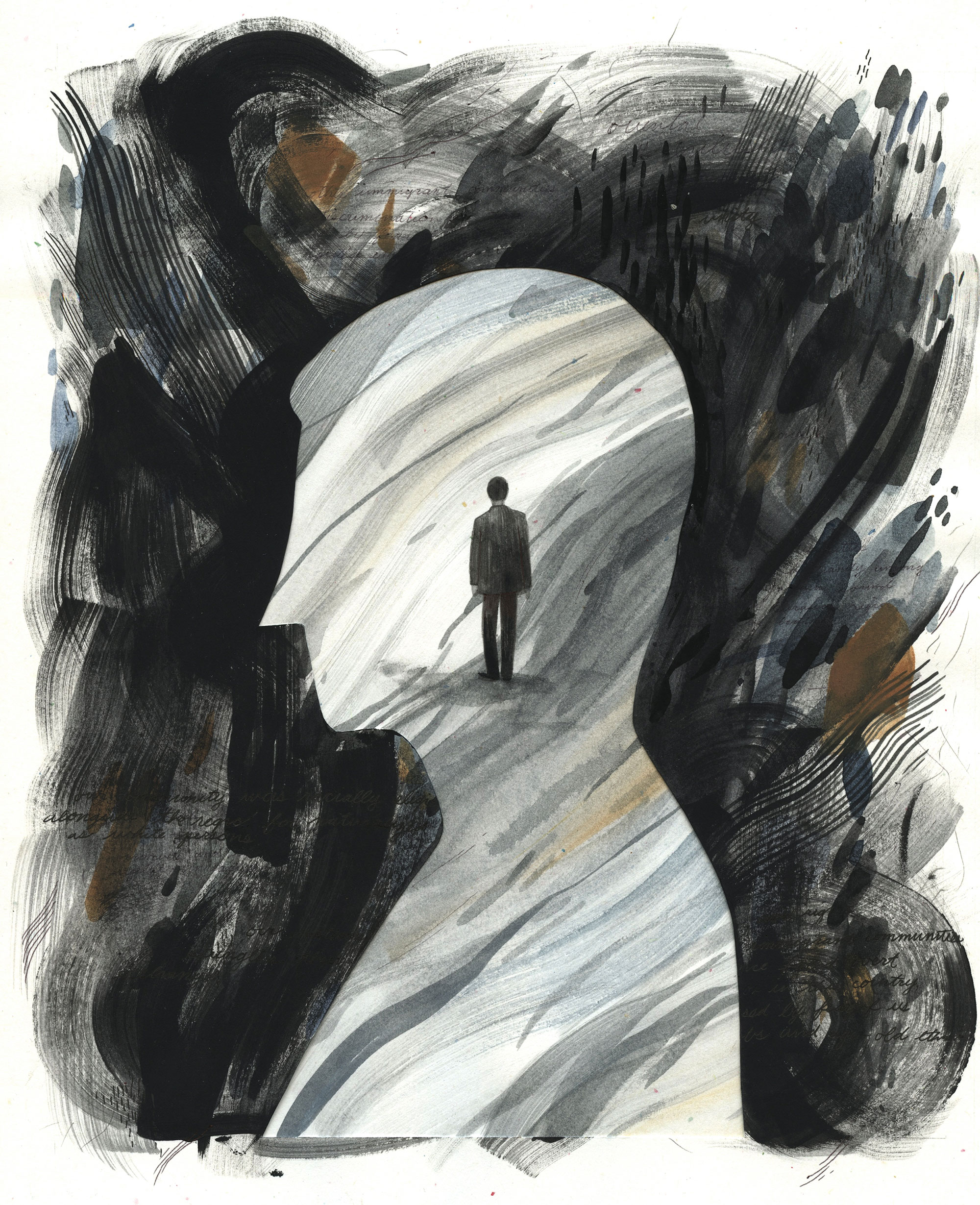
U.S. naturalization laws have historically unfairly treated Asian Americans. But what if Asian Americans were considered white?
It is 1968 and I am 24 years old. My name is Sam Kayama. I was born in the American South in Greenville, Mississippi, and studied U.S. history in college, focusing on the events of the late 19th and early 20th centuries. It was there that I learned about Takao Ozawa, who was rightfully recognized as a white man by the U.S. Supreme Court.
Like many other immigrant communities, Japanese Americans once faced discrimination in this country. It often took the form of exclusion from neighborhoods, jobs, churches, and restaurants. This was caused by a fear that we would take local jobs and an age-old anti-immigrant prejudice. I have seen pictures of the "Japs not welcome" signs and read the statutes in history books. There was a proliferation of all sorts of ugly stereotypes before we were recognized as full Americans.
My grandfather's family members were originally farmers in the south of Japan, when news reached them of the 1871 Chinatown Massacre of Los Angeles — 18 Asiatic immigrants lynched by an angry mob. The Asiatic Exclusion League, formed in 1905 to protest Asiatic immigration, and the Vancouver Anti-Oriental Riots in 1907, which incited vigilante action against Japanese migrants on the mainland, formerly dissuaded my grandfather's family from making the trip. But eventually my grandfather and his son came to the U.S. in the original influx of Japanese after Ozawa v. U.S. lifted formal restrictions against Japanese immigration in 1922.
Naturalization
The Naturalization Act of 1906 determined that only free white persons and persons of African descent could be naturalized as American citizens. Then in Ozawa v. U.S., the Supreme Court ruled that the descendants of the Japanese diaspora were properly classified as "free white persons".
Justice George Sutherland explained the court's decision: "Although these [racial] norms have become established by judicial and executive concurrence and legislative acquiescence, this court feels at liberty to disturb them in light of the preponderance of ethnological and popular evidence."
The Supreme Court referred to "Blumenbach's Folly", referencing the 18th century scientist and anthropologist Johann Blumenbach who posited that there were five natural races in the world: the Ethiopian, the American, the Caucasian, the Mongolian, and the Malayan. The Supreme Court pointed out he was incorrect on a very basic front; as now taught in elementary schools, there are actually four great inhabited landmasses: Africa, Eurasia, Australia, and the Americas.

The Supreme Court argued that Blumenbach tried to count the Eurasian landmass as two separate continents because of the prejudice of his time and his mistaken desire to elevate himself from a fictional "Mongolian" race. In reality, there is a single continent, and the "Caucasians" and "Mongolians" are only brothers in a varied but unified white race. The court determined that "although, as popularly understood, the Japanese are not considered Caucasian, the loyal Japanese immigrant must be considered a free white person for the purposes of naturalization, and is in this sense equal to the immigrant from other parts of Eurasia such as Russia, Ukraine, and Germany."
This decision formally settled the disarray of local courts that had remained divided on the issue of Asiatic racial status. Following Takao's example, other Oriental Caucasian immigrants petitioned the courts to also be recognized as white. In 1923, U.S. v. Bhagat Singh Thind ruled Indian migrants to be classified as free white persons for the purposes of citizenship. Gong Lum v. Rice in 1927 likewise won the right of Chinese immigrant children to attend segregated schools alongside other free whites.
Now classified as free white persons, our community was eligible for naturalized citizenship. This leveled the playing field in terms of citizenship and work opportunities. There was some initial resistance to the court decision, particularly from labor sectors, but others saw how hardworking we were and welcomed us.
With the establishment of the Immigration Act of 1924 and the Eurasian Inclusion Act, the government of Japan was able to enter into a treaty with the U.S. for exclusive immigration opportunities, in a similar way that Japanese contract laborers were sent to the Kingdom of Hawaii decades before.
Our nations began to strengthen their friendship and exchange textiles, automobile parts, and persons. Asiatic whites as a class rose fairly quickly through hard work and study. We began to take our places in medicine and business, as well as in the Church, and were proud to be recognized as full Americans.
World War II
When the armies of Germany launched surprise attacks on our East Coast and on our Allies in Japan in the fall of 1942, many of my countrymen feared that former immigrants from Germany and their descendants had compromised loyalty to the U.S. The media began to revive old racial myths about the German "Huns", and propagandists pointed out the failures of German assimilation and sowed fear about the traitorous "Saxon" race.

Others stood up and reminded us of our brothers' place of racial belonging. The morning after the attack, our president reminded us that the German immigrants and their descendants living here were Americans and loyal white citizens as much as those of us who came to this great melting pot from Ireland, Japan, Scotland, England, or China.
Germany's death camps were a tragic mark on the war, the result of people obsessed with finding difference and creating artificial racial categories — both "Jew" and "Aryan" are Eurasian. The gas chambers were the result of accepting a false racial framework. Many in our community volunteered to fight against the threat of the Third Reich; we fought bravely alongside German American and other Cauc-Asian boys from Mississippi, Alabama, and Arkansas. At this time, the country's army was still racially segregated, so we did not serve with Negro soldiers. This was a severe time in our community's history, and we were faithful Americans on the battlefield and at home.
The unity of the Allied forces against the Axis powers of Germany and Italy saw peace reestablished in a number of years. Together, Japanese and American scientists were some of the great minds behind developing the nuclear energy that defeated the militarism of the Third Reich. The conflict formally ended with the surrender of Germany, and the negotiating of the Sino-U.S.-Greater East Asia Co-Prosperity Sphere Treaty of April of 1943.
Civil Rights Movement
I was born on July 8, 1944, the year after the war ended. One of my most vivid childhood memories is the day a boy named Emmett Till was killed in our town. It was the summer of 1955. The newspapers said that a couple of white men were charged with kidnapping and killing a Negro boy from Chicago. They claimed that the boy had been talking smart to a young white woman who worked in Mr. Nakashima's General Store. The trial brought a flurry of media, and when the all-white jury acquitted the woman's husband and her half brother, I thought the town was going to implode.
Killings and acquittals such as these mobilized the Negro community to argue for greater recognition in this land. One of the most vocal dissenters who emerged as a rowdy leader in this movement was a Christian pastor from Georgia named Dr. Martin Luther King Jr.

Some whites supported the efforts, too. The Rev. Abraham Akaka from Hawaii mailed leis to this Negro minister, demonstrating that not all of the white community was against his mission. But during this time, we had access to fair schools, proper housing, and the appropriate social vocations, so we did not need to support the calls from the Negro community for integration. Some feared a negative influence on white children from the social integration of Negro children. When Negro protestors marched in Chicago, they were turned away by whites holding signs against integration in order to protect the quality of our children's education. One hurled a brick at Dr. King's head.
At a press conference after the Chicago incident, Dr. King spoke: "I am convinced that the white man, whatever his phenology, whatever the shape or hue of his eyes or national origin, is the profound victim of an attitude that does not serve Christian brotherhood."
From a Birmingham, Alabama jail in 1963, he wrote that "whites from the U.S., England, and Japan must reconcile their apathy for the Negro", imploring clergy to support his cause. My uncle, a Methodist minister, read the letter and distributed copies in his church.
I can understand his argument, but progress does not always come quickly. If anything, I would caution these outside agitators from going too far in their social activism, forgetting that the essence of the gospel is the salvation of the soul, not the temporary change of the world we live in now. It is unfortunate that the Negro is in this position in our society, but let him not forget that God rewards hard work.
It is a comfort to finally know one's place in the world, and I will teach my children about Jesus, about this beautiful and godly country, and how we might serve it as faithful citizens, while making sure to obey all the statutes and demands of this land.
In both the Ozawa and Thind cases, Justice Sutherland ruled that the words “white person” in the Naturalization Act were “synonymous with the word ‘Caucasian’ only as that word is popularly understood.” In Lum v. Rice, 9-year-old Chinese American Martha Lum was revoked access to an all-white school in a district where no school existed for Chinese students despite compulsory attendance laws; the Supreme Court held that racial segregation did not violate the 14th Amendment. Brown v. Board of Education effectively overruled the Supreme Court’s ruling in 1954.
Such decisions strengthened, reaffirmed and paved the way for more racist policies in U.S. immigration and naturalization laws, not including the incarceration of Japanese Americans during WWII.

Maggie Chiang was born to a Taiwanese family in the City of Angels and is a full-time artist and part-time dreamer. Inspired by places both real and fictitious, her illustrations evoke a longing for adventure and the pursuit of the unknown, exploring impossible landscapes and places unseen. You can find her online at hellomaggiec.com.
